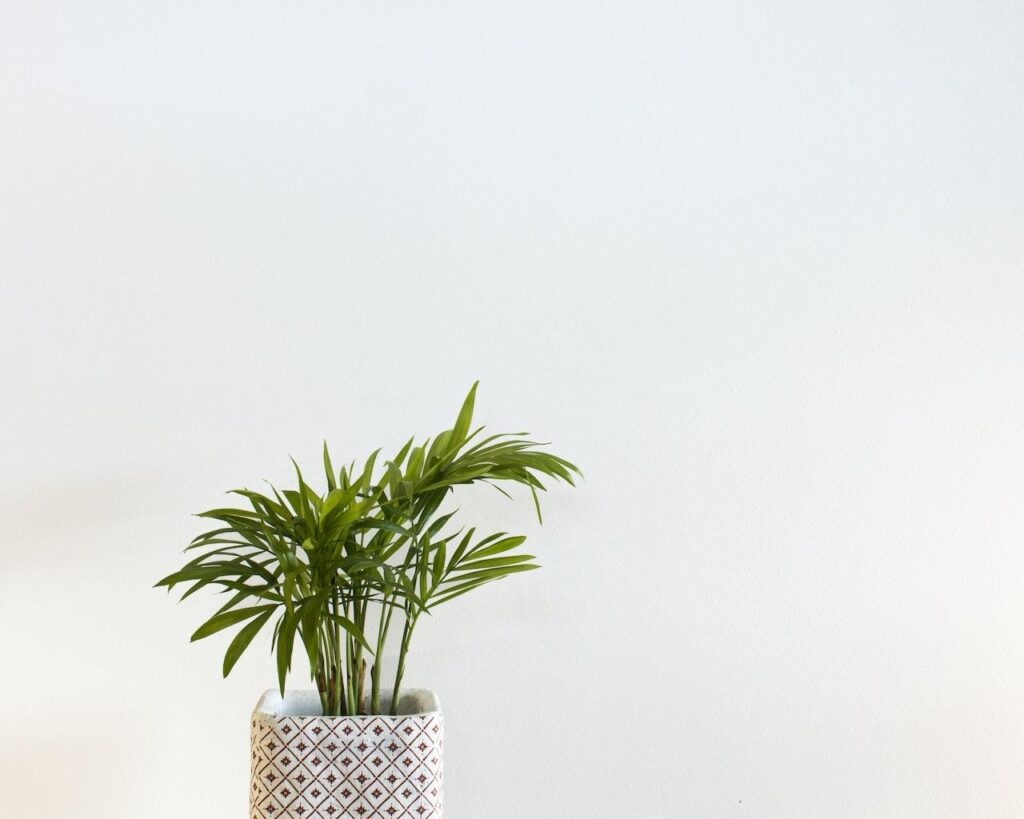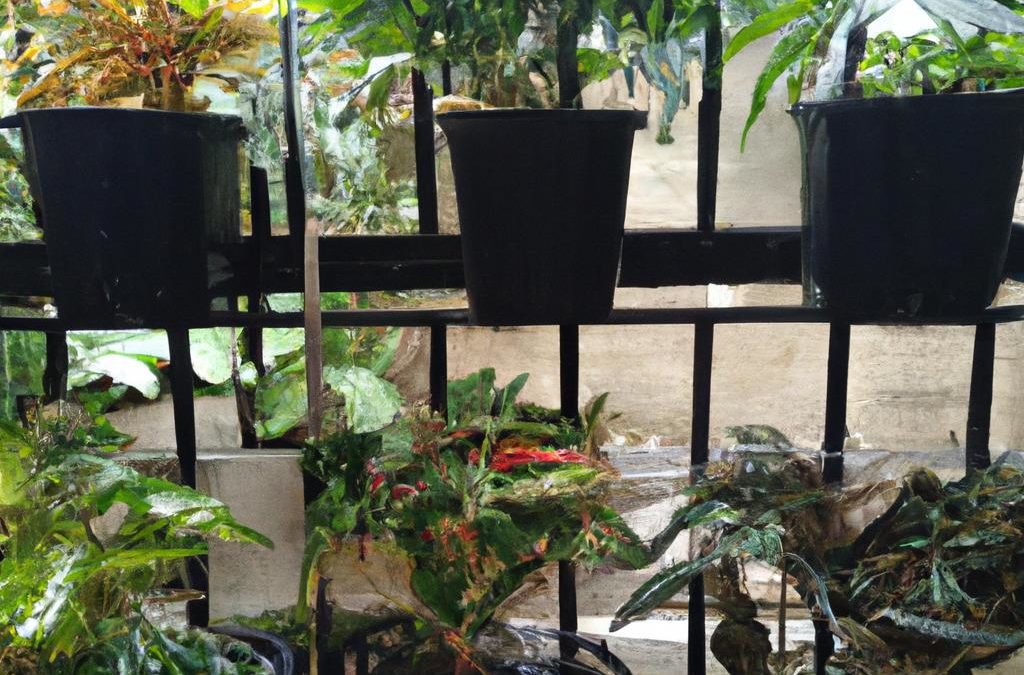We all need oxygen to survive. Without it, our bodies and brains wouldn’t function properly. So, it’s important to make sure that the air in our homes is fresh and full of oxygen. A simple way to do this is by adding houseplants.
“Indoor plants are a simple and effective way to increase oxygen levels and create a healthier home environment.” – Elizabeth Waddell, Healthline
Not only do houseplants add a touch of greenery and beauty to our homes. They also help to clean the air by removing harmful toxins and producing oxygen. In fact, studies have shown that indoor plants can improve air quality and increase oxygen levels in a room.
But with so many houseplant options available, it can be tough to choose the best ones for oxygen production. That’s why we’ve compiled a list of the top 5 houseplants you need in your home to boost oxygen levels.

1. Snake Plant (Sansevieria trifasciata)
Also known as “Mother-in-Law’s Tongue,” the snake plant is a great plant for adding oxygen to your home. Its tall, straight leaves are able to absorb excess carbon dioxide and release oxygen. This makes it a great plant for bedrooms.

In a NASA study, the snake plant effectively removed toxins like formaldehyde, trichloroethylene, and benzene from the air. These toxins, commonly found in household products, can harm our health when inhaled over time.
“The snake plant is a natural air purifier that’s easy to care for and looks great in any room.”. – Lisa Eldred Steinkopf, The Houseplant Expert
2. Areca Palm (Dypsis lutescens)
The areca palm is excellent for producing oxygen and cleaning toxins from the air, improving the overall air quality in your home. Its big, feathery leaves are able to absorb carbon dioxide and release oxygen. This makes it a great choice for living rooms and other large spaces.

In addition to increasing oxygen levels, the areca palm reduces benzene and trichloroethylene levels in the air, which is good for your health.
“The Areca palm is a beautiful and functional plant that can add a tropical touch to your home while also purifying the air.” – Laura K. Robertson, The Spruce
3. Peace Lily (Spathiphyllum sp.)
The peace lily is a stunning plant that’s known for its white, hooded flowers and ability to produce oxygen. It has large, glossy leaves that are not only able to absorb excess carbon dioxide but also release oxygen. Making it, therefore, an excellent plant for bedrooms and other small spaces. Furthermore, its ability to purify the air enhances its suitability for these areas, providing a healthier and fresher environment.

In a study conducted by the University of Agriculture in Norway, the peace lily effectively removed toxins, including benzene, formaldehyde, and trichloroethylene, from the air. It was also found to be particularly effective at removing acetone. A chemical that’s released by electronic devices such as printers and computers.
“The peace lily is a beautiful and low-maintenance plant that can help to purify the air in your home.” – Clare Schmitt, Flower Magazine
4. English Ivy (Hedera Helix)
English ivy is a popular choice for increasing oxygen levels in the home. Its small, glossy leaves are able to absorb carbon dioxide and release oxygen. Making it a great plant for living rooms and other large spaces.
In a study by NASA, English ivy effectively removed toxins like benzene, formaldehyde, and trichloroethylene, which harm respiratory health.

EEnglish ivy is also an excellent plant for those with allergies, as it helps reduce mold levels in the air. In fact, a study published in the Journal of Allergy and Clinical Immunology found that English ivy could reduce mold spore levels by up to 78%. Therefore, it is a great choice for improving air quality and easing allergy symptoms.
“English ivy is a beautiful and versatile plant that can help to purify the air in your home and reduce allergy symptoms.” – Elizabeth Waddell, Healthline
5. Aloe Vera (Aloe barbadensis)
Aloe vera is a succulent plant known for its medicinal properties and its ability to produce oxygen. Additionally, its thick, fleshy leaves absorb carbon dioxide and release oxygen. Making it a perfect choice for bedrooms and other small spaces. Moreover, its air-purifying benefits can enhance the environment in any room.

In addition to boosting oxygen, aloe vera purifies air. A University of Madrid study showed it effectively removes formaldehyde, a common pollutant in household products.
“Aloe vera is a versatile and easy-to-care-for plant that can help to purify the air in your home and provide a range of health benefits.” – Rachel Morgan, Medical News Today
6. Boston Fern (Nephrolepis exaltata)
The Boston fern is known for producing oxygen and removing toxins from the air. Moreover, its large, feathery fronds absorb carbon dioxide and release oxygen, making it an ideal choice for living rooms and other large spaces. Furthermore, it helps improve air quality while enhancing your home’s atmosphere.
In a study conducted by NASA, the Boston fern was found to be particularly effective at removing formaldehyde. Formaldehyde is a common indoor air pollutant that can be found in household products. Such as cleaning supplies, and personal care products.

The Boston fern is great for allergies, as it reduces mold levels in the air. In fact, a study published in the Journal of Allergy and Clinical Immunology found that the Boston fern effectively reduced mold spore levels by up to 72%. Consequently, it can significantly improve air quality in your home.
“The Boston fern is a beautiful and classic plant that can help to purify the air in your home and reduce allergy symptoms.” – Clare Schmitt, Flower Magazine
7. Philodendron (Philodendron sp.)
The Philodendron is a popular houseplant that’s known for its ability to produce oxygen and remove toxins from the air. Its large, glossy leaves are able to absorb carbon dioxide and release oxygen. Making it a great plant for bedrooms and other small spaces.

In a study conducted by NASA, Philodendron was found to effectively remove various toxins, such as benzene, formaldehyde, and trichloroethylene. These harmful chemicals are commonly found in household products and may negatively affect our respiratory health.
“The Philodendron is a hardy and attractive plant that can thrive in a range of indoor conditions and help to purify the air in your home.” – George K. Jatania, Houseplant expert
8. Golden Pothos (Epipremnum Aureum)
The Philodendron is a popular houseplant known for its produce oxygen ability and toxin-removal properties. Its large, glossy leaves absorb carbon dioxide and release oxygen. Consequently, it makes an excellent plant for bedrooms and other small spaces.
“The golden pothos is a beautiful and low-maintenance plant that can help to purify the air in your home and reduce allergy symptoms.” – Lisa Eldred Steinkopf, The Houseplant Expert

In a study conducted by NASA, the golden pothos proved effective at removing toxins like benzene, formaldehyde, and trichloroethylene. These chemicals, commonly found in household products, negatively affect respiratory health.
Moreover, the golden pothos is beneficial for allergy sufferers. It has been shown to reduce mold levels in the air. In fact, a study in the Journal of Allergy and Clinical Immunology found it reduced mold spore levels by up to 75%.
The golden pothos is a hardy and easy-to-care-for plant that can thrive in a range of indoor conditions. It thrives in both soil and water, making it a versatile addition to any home. Additionally, it tolerates low light, perfect for rooms with limited natural sunlight.

In addition to its air-purifying properties, the golden pothos are also an attractive plant that can add a touch of greenery to any room. Its long, trailing leaves are a vibrant shade of green, making it a striking addition to any home. It’s a great choice for anyone looking to improve the air quality in their home. And add a touch of greenery to their living spaces.
9. Gerbera Daisy (Gerbera Jamesonii)
The Gerbera daisy is a popular houseplant known for its vibrant flowers and oxygen-producing ability. Its large, glossy leaves absorb carbon dioxide and release oxygen. As a result, it’s an excellent choice for bedrooms and other small spaces.

A NASA study found that the Gerbera daisy effectively removes toxins, such as benzene, formaldehyde, and trichloroethylene. These harmful chemicals are commonly found in household products and can negatively affect respiratory health.
“The Gerbera daisy is a beautiful and low-maintenance plant that can help to purify the air in your home and add a touch of color to any room.” – Elizabeth Waddell, Healthline
10. Rubber Plant (Ficus Elastica)
The rubber plant, a popular houseplant, produces oxygen and removes toxins from the air. Its large, glossy leaves absorb carbon dioxide, releasing oxygen. Therefore, it makes a great addition to living rooms and other large spaces.

In a NASA study, the rubber plant proved effective at removing toxins like benzene, formaldehyde, and trichloroethylene. These harmful chemicals, commonly found in household products, can consequently have negative effects on respiratory health.
“The rubber plant is a striking and low-maintenance plant that can help to purify the air in your home and add a touch of drama to any room.” – Lisa Eldred Steinkopf, The Houseplant Expert
Frequently Asked Questions
1. What are the benefits of increasing oxygen levels in my home?
Increasing oxygen levels in your home can help to improve air quality, creating a healthier environment for you and your family. Higher oxygen levels also boost energy, enhance focus, and improve mood, contributing to overall well-being.
2. Which houseplants are best for boosting oxygen levels?
Some of the best plants for increasing oxygen levels include the snake plant, areca palm, peace lily, English ivy, and aloe vera. These plants, in particular, are highly effective at absorbing carbon dioxide and releasing oxygen, thus improving air quality in your home.
3. Can houseplants really remove toxins from the air?
Yes, certain houseplants, like snake plants, areca palms, and peace lilies, remove toxins such as benzene, formaldehyde, and trichloroethylene. Studies, including NASA’s Clean Air Study, confirm the air-purifying capabilities of these plants.
4. How do I care for houseplants to ensure they increase oxygen levels?
To ensure your houseplants effectively purify the air, provide them with proper care. Make sure they receive adequate sunlight, water, and nutrients. Additionally, regularly clean the leaves to remove any dust or debris that could block their ability to absorb carbon dioxide and release oxygen.
5. Can houseplants reduce allergy symptoms?
Yes, certain houseplants, such as English ivy, golden pothos, and Boston ferns, can help reduce allergy symptoms. In fact, studies have shown that these plants can lower mold spore levels by up to 75%, ultimately contributing to improved air quality and allergy relief.
Conclusion
Houseplants are a simple and effective way to increase oxygen levels and improve the air quality in your home. By introducing a few of these oxygen-boosting plants into your living spaces, you can create a fresher and healthier environment for you and your family. Whether you choose any of these plants, they are sure to add a touch of greenery and beauty to your home while also purifying the air.
Michelle Wilde
Related posts
![]()
About Michelle Wilde
Michelle Wilde is a stay-at-home mom and avid plant lover. Armed with a post-graduate degree in Computer Science (no kidding!), she loves researching plants and landscapes. When she is not caring for her 4 kids, she spends time on her passion for plants. She blogs at www.indoorplantschannel.com, the trusted source for indoor plants.
Learn more
Subscribe
* You will receive the latest posts and updates about indoor plants!
Search
Recent Posts
Categories
- Beginner Guides (10)
- FAQ (206)
- General (2)
- How-To Guides (212)
- Indoor Plants (214)
- Pest Management (2)
- Plant Problem Solutions (4)
- Seasonal Growing (2)
- Specialized Environments (2)
- Specific Plant Care (3)
- Technical Growing (2)
